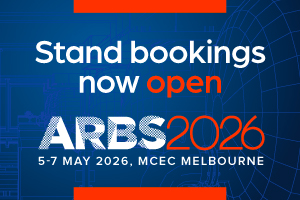Engineers Australia launches program to attract young engineers
Engineers Australia’s Inspiring Future Engineers program is designed to attract the next generation of talent to the profession.

The Inspiring Future Engineers program will include discussion papers, submissions and advocacy led by Engineers Australia, all focused on raising awareness of the profession and the many pathways into it.
The program comes as Australia faces a growing shortfall of engineers, with an estimated 60,000 more needed by 2035. Despite this, domestic student commencements in engineering have flatlined since 2014 and fewer young people are taking the advanced maths subjects needed to enter the profession. As a result, the nation remains heavily reliant on skilled migration to meet demand – a strategy that Engineers Australia says is not sustainable in the long term.
Working in partnership
To launch the program, Engineers Australia has teamed up with educational technology platform Year13 on the Engineered for Impact Academy and Engineering Hub, which uses social media, career tools and engaging online content to raise awareness about engineering and its positive impacts on society among school students.
“Engineering is often stereotyped as hard hats and boots, yet the reality is it’s one of the most diverse, future-focused careers available,” says Bernadette Foley, Engineers Australia Group Executive – Professional Standards and Engineering Practice.
“From tech and healthcare to climate and space, engineering shapes every part of modern life.”
Bernadette Foley, Engineers Australia
“It’s a career for anyone who loves creativity, solving problems and making a real impact, and the Year13 collaboration highlights that.”
Changing perceptions
The new program comes in response to a new report that has found engineering ranks fourth for student career interests, behind medicine, health sciences and business.
According to the report – titled Decoding the Career Path of Today’s Young People – negative stereotypes and a lack of understanding of the job are potentially discouraging young people from taking up engineering.
“Additional research from Year13 shows many young people still don’t understand what engineering is or the wide range of opportunities it offers,” Foley says. “Outdated stereotypes and a lack of visibility of the real-world impact of engineers is turning potential talent away before they’ve had a chance to even consider the profession.”
Foley says highlighting the diversity within engineering is one of the program’s key aims.
“There’s no single path into engineering, and many different roles within an engineering team,” Foley says.
“Some people go directly to university; others pursue apprenticeships or vocational training. What matters is making sure more young people can see themselves in roles within the engineering profession.”
“Because if we don’t, we’ll struggle to keep up in the areas where engineers are needed most.”
You can watch a video describing the shortage and potential remedies via the LeadStory platform.
Key stats
- Up to 68,000 qualified and experienced engineers could retire by between 2021-36
- Just 16% of professional engineers and 19% of engineering graduates in Australia are women
- Over 60% of the current engineering workforce were born overseas.
Key findings from the report
- 74% of young people want to work in jobs that represent the future
- 75% of young people are proud to pursue careers similar to those of successful people around them, with status and prestige playing a key role – especially in fields like engineering and technology
- Creativity, societal impact and job security rank among the top five career motivators for young people – making engineering’s role in solving real-world challenges, especially in sectors like healthcare, a powerful driver of career interest
- Of the 871 young females (13–18 years old), only 8% want to pursue a career in engineering, with many citing a lack of female role models and understanding of what engineering is as key barriers.
Key findings from a Year13 survey into engineering
Most attractive aspects
Great pay 43% | Solving big problems 27% | Unsure 14% | Travel/overseas 10% | Variety 6%
Engineering awareness
Great deal 5% | A lot 6% | Moderate 23% | Little 42% | Nothing 24%
Industry perception
Very positive 8% | Positive 47% | Neutral 41% | Negative 4% | Very negative 0%
Likelihood of engineering career
Definitely 5% | Likely 9% | Neutral 16% | Unlikely 39% | Definitely not 31%
PREV
NEXT
Comments
Advertisements
Recent news
- Daikin opens new Australian manufacturing facility
- Refrigerant Handling Codes of Practice now available digitally
- Registrations open for ARBS 2026
Latest events
- Melbourne School of Design to host ASA2025 conference
- HVAC&R industry’s finest shine at 2025 AIRAH National Awards
- Nominations open for ARBS Awards 2026
 Nick Johns-Wickberg
Nick Johns-Wickberg

Leave a Reply